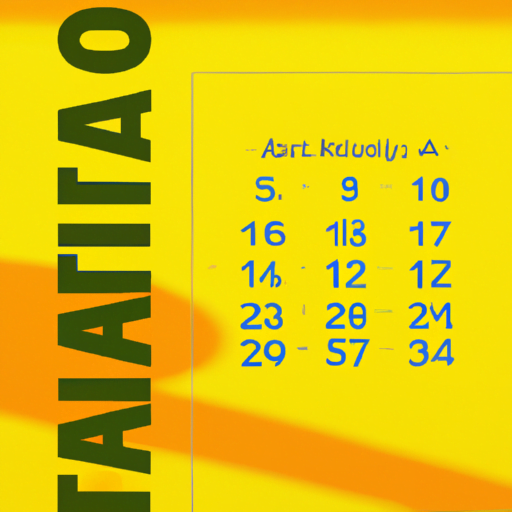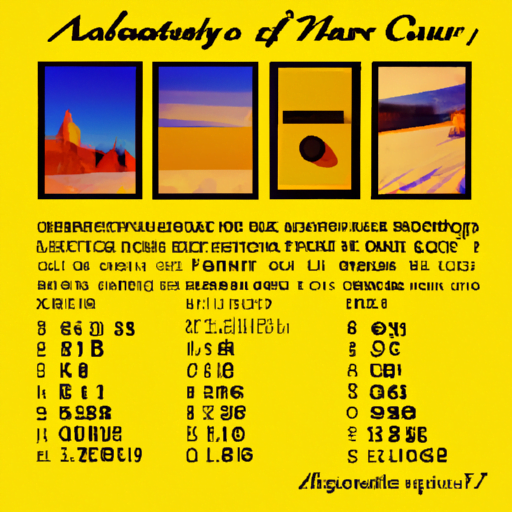
-
Table of Contents
- Typography in Annual Calendars: Enhancing Visual Appeal
- The Role of Typography in Annual Calendars
- Choosing the Right Fonts
- Typography Elements to Consider
- Case Studies: Effective Typography in Annual Calendars
- Example 1: Minimalist Calendar
- Example 2: Playful Calendar
- Statistics on the Impact of Typography
- Summary
Typography in Annual Calendars: Enhancing Visual Appeal

Typography plays a crucial role in the design of annual calendars. It not only helps convey information effectively but also enhances the visual appeal of the calendar. In this article, we will explore the importance of typography in annual calendars and how it can be used to create visually appealing and functional designs.
The Role of Typography in Annual Calendars
Typography is the art and technique of arranging type to make written language legible, readable, and visually appealing. In the context of annual calendars, typography serves several important purposes:
- Legibility: The primary purpose of typography in calendars is to ensure that the text is easily readable. The choice of font, font size, and spacing between letters and lines all contribute to the legibility of the calendar.
- Organization: Typography helps organize the information presented in the calendar. By using different font styles, sizes, and colors, important dates, events, and holidays can be highlighted, making it easier for users to navigate and find relevant information.
- Visual Appeal: Typography adds visual interest and aesthetics to the calendar design. The right choice of fonts and typography elements can create a sense of harmony and balance, making the calendar visually appealing and engaging.
Choosing the Right Fonts
When selecting fonts for annual calendars, it is important to consider the overall theme and purpose of the calendar. Here are some factors to consider when choosing fonts:
- Readability: The font should be easily readable, even at small sizes. Avoid overly decorative or complex fonts that may hinder legibility.
- Consistency: Use a consistent set of fonts throughout the calendar to maintain a cohesive look and feel. Mixing too many different fonts can create visual clutter and confusion.
- Contrast: Create contrast between different sections of the calendar by using fonts with varying weights (e.g., bold, regular, light) or styles (e.g., serif, sans-serif).
- Theme: Consider the theme or mood of the calendar when selecting fonts. For a formal or professional calendar, choose elegant and classic fonts. For a playful or creative calendar, opt for more whimsical and fun fonts.
Typography Elements to Consider
In addition to font selection, there are several typography elements that can be used to enhance the visual appeal of annual calendars:
- Font Size: Varying font sizes can help create visual hierarchy and emphasize important information. Use larger font sizes for headings and important dates, and smaller font sizes for less significant details.
- Font Weight: Using different font weights, such as bold or italic, can add emphasis and visual interest to the calendar design. However, it is important to use them sparingly to avoid overwhelming the reader.
- Color: Color can be used to highlight important dates or events in the calendar. Choose colors that complement the overall design and ensure that the text remains readable against the background.
- Spacing: Proper spacing between letters, words, and lines is crucial for readability. Avoid overcrowding the text and ensure that there is enough white space to allow the text to breathe.
Case Studies: Effective Typography in Annual Calendars
Let’s take a look at some real-world examples of annual calendars that effectively use typography to enhance their visual appeal:
Example 1: Minimalist Calendar
In this minimalist calendar design, a clean and simple sans-serif font is used for the dates and headings. The font size is consistent throughout the calendar, creating a sense of uniformity. The use of ample white space and minimalistic design elements allows the typography to take center stage, resulting in an elegant and modern calendar.
Example 2: Playful Calendar
For a playful and creative calendar, a combination of bold and whimsical fonts can be used. The font sizes vary to create visual interest and emphasize important dates. The use of vibrant colors and playful illustrations further enhances the overall design, making it visually appealing and engaging.
Statistics on the Impact of Typography
The importance of typography in design is supported by various studies and statistics:
- A study by the Software Usability Research Laboratory found that good typography can improve reading speed by up to 20%.
- In a survey conducted by Adobe, 66% of graphic designers agreed that fonts and typography play a crucial role in capturing attention.
- According to a study by the Nielsen Norman Group, users spend an average of 5.59 seconds looking at a website’s main headline, highlighting the importance of typography in grabbing attention.
Summary
Typography plays a vital role in enhancing the visual appeal and functionality of annual calendars. By choosing the right fonts, considering typography elements, and incorporating effective design techniques, calendars can become visually engaging and easy to read. The use of typography can create a sense of organization, highlight important information, and add aesthetic value to the calendar design. Remember to consider the overall theme and purpose of the calendar when selecting fonts and typography elements. By paying attention to typography, annual calendars can become more than just a tool for tracking dates; they can become visually captivating pieces of art.
